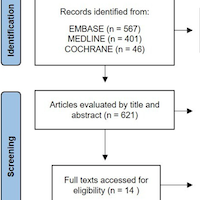
Prior Exposure to ACEi Increased Cardiovascular Response to Angiotensin-II
Prior exposure to RAS-inhibiting medications was associated with an altered RAS profile and cardiovascular response to angiotensin-II treatment in patients with catecholamine-refractory vasodilatory shock. ACE-inhibitor... read more

Vasopressor Reduction Effect of Polymyxin B Hemoperfusion
This study aimed to evaluate the effect of polymyxin B hemoperfusion (PMX-HP) in patients with peritonitis-induced septic shock who still required high dose vasopressors after surgical source control. A total of 338 patients... read more

Remimazolam Effect on Hemodynamics in Patients with Septic Shock
Remimazolam is safe and effective for inducing general anesthesia in patients with septic shock. Low, medium, and high doses of remimazolam can maintain a stable hemodynamic state, and the recovery of hepatic and renal function... read more

Fluid Boluses May Improve CRT
Several studies have validated capillary refill time (CRT) as a marker of tissue hypoperfusion, and recent guidelines recommend CRT monitoring during septic shock resuscitation. Therefore, it is relevant to further explore... read more

Handbook of Sepsis
This recently released practically oriented book provides an up-to-date overview of all significant aspects of the pathogenesis of sepsis and its management, including within the ICU. Readers will find information on... read more

Methylene Blue in Sepsis and Septic Shock
This systematic review and meta-analysis evaluated the effect of MB in three RCTs. They found that MB treatment significantly reduced time to vasopressor discontinuation, days on mechanical ventilation, and length of ICU... read more

Textbook of Ventilation, Fluids, Electrolytes and Blood Gases
The Textbook of Ventilation, Fluids, Electrolytes and Blood Gases encompass essential topics for which thorough education and training is a must for any clinician who manages these patients. This book has four sections, each... read more

Hydroxocobalamin Treatment for Vasoplegia-associated Shock
Vasoplegia is generally defined as prolonged vasodilation due to a pathological decrease in systemic vascular resistance, which causes persistent hypotension even in the setting of normal or increased cardiac output. Vasoplegia... read more

Cardiac Index and Heart Rate as Prognostic Indicators for Mortality in Septic Shock
Our retrospective study shows that monitoring cardiac index and heart rate in patients with septic shock may help predict the organismal response and hemodynamic consequences, as well as the prognosis. Thus, healthcare providers... read more

Fluid Personalization and Vasopressor Decisions in Early Sepsis Management
In this randomized vignette survey study of US critical care clinicians, we found that fluid volume already received was associated with the largest changes in decisions to administer additional fluids or initiate vasopressors... read more

Handbook of Critical and Intensive Care Medicine
The latest edition of this handbook is a concise yet comprehensive guide for attending physicians, fellows, residents, and students who cover the ICU. The chapters follow an outline format and are divided by organ system,... read more

Handbook of Evidence-Based Critical Care
This updated and revised edition of the classic bedside pocket reference remains the gold standard in critical care medicine. The new edition maintains Dr. Marik's trademark humor and engaging writing style, while adding... read more

Traumatic Major Hemorrhage in a Tertiary Trauma Center
Major traumatic hemorrhage is potentially preventable with rapid hemorrhage control and improved resuscitation techniques. The time from injury to hospital, resuscitation, diagnosis, and definitive bleeding control should... read more

Scientific Study Validates Usability of Post-ICU Digital Diary for Families of ICU Patients
In a groundbreaking pilot study, "The usability of a digital diary from the perspectives of intensive care patients’ relatives", researchers have unequivocally confirmed the practicality and effectiveness of Post-ICU for... read more




